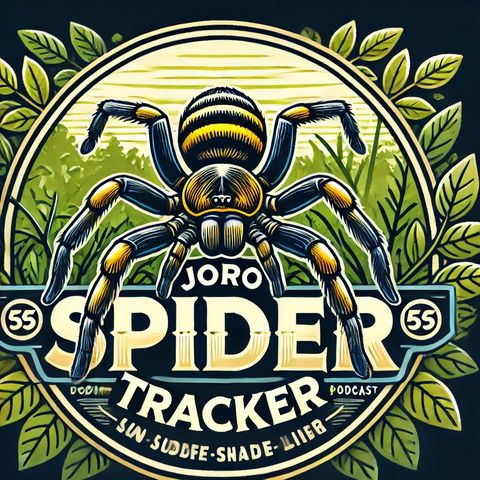Joro Spider Invasion: The Fascinating and Concerning Spread of an Exotic Arachnid Across the U.S.

Sign up for free
Listen to this episode and many more. Enjoy the best podcasts on Spreaker!
Download and listen anywhere
Download your favorite episodes and enjoy them, wherever you are! Sign up or log in now to access offline listening.
Description
The Joro spider, a visually striking species native to East Asia, has been making headlines as it expands its territory across the East Coast of the United States. Scientifically named...
show moreDespite its daunting size, with females reaching a leg span of up to four inches and displaying a bright yellow, blue, and red coloration on their bodies, the Joro spider is relatively harmless to humans. The venom of the Joro spider is not potent enough to cause significant harm to humans, functioning primarily as a means to incapacitate its prey, which mainly consists of insects. Reports of their bite are extremely rare and generally result in no more than mild, localized discomfort.
One of the notable features of the Joro spider is its resilience in colder climates. Unlike some other spider species, Joros have the ability to survive the more moderate winters found in the U.S., potentially allowing them to spread further and establish larger populations. This adaptability raises concerns about the spider becoming an invasive species, with possible ecological impacts including competition with native species for food and habitat.
While the idea of "flying spiders" can ignite imaginations, it is actually the spiderlings' ability to 'balloon' that earns them this misnomer. Ballooning is a dispersal technique used by various spider species, involving the release of silk strands to catch the wind, carrying them over distances. This method allows Joro spiderlings to spread over large areas, potentially accelerating their colonization of new territories.
Meanwhile, on another topic of public concern, efforts are underway in California to mitigate the issue of illegal fireworks. With nearby states like Nevada offering less restrictive sales policies, California faces ongoing challenges as residents purchase fireworks out of state and bring them into California, contributing to safety risks and regulatory violations. One company, likely motivated by both public safety concerns and business interests, is lobbying for stricter enforcement to curb this practice. Such moves could potentially reshape how fireworks are sold and used in the state, aiming to reduce the hazards associated with their unauthorized use.
Together, these threads of news reflect the complex interactions between human activity, wildlife migration, and regulatory environments. Whether dealing with the spread of exotic arachnids or the management of pyrotechnic products. Both cases highlight the broader themes of adaptation, regulation, and the unintended consequences of human activity on our natural and social environments. As communities and policymakers tackle these challenges, the outcomes will undoubtedly contribute to our evolving understanding of sustainable coexistence with both natural wildlife and manufactured commodities.
Information
| Author | QP-4 |
| Website | - |
| Tags |
Copyright 2024 - Spreaker Inc. an iHeartMedia Company
